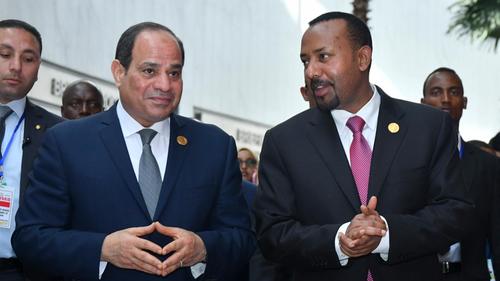HIGH STAKES
The construction of the $5 billion dam, the biggest in Africa and seventh largest in the world, is approximately 70 percent complete and is expected to provide much-needed electricity to Ethiopia’s 100 million people as one of the world’s poorest countries hopes to transform itself from a symbol of poverty to Africa’s biggest power exporter and its most dynamic economy.
Ethiopia has an acute shortage of electricity, with 65% of its population not connected to the grid. The energy generated will be enough to have its citizens connected and sell the surplus power to neighbouring countries including Sudan, South Sudan, Kenya, Djibouthi and Eritrea, many of whom have huge power deficits.
Egypt, with a similar population, sees damming the Nile upstream as an existential threat and is seeking to protect its main source of fresh as it fears the Nile dam will reduce its share of the river and leave the country with dwindling options, particularly for the millions of farmers who depend on its waters to irrigate their land. Cairo fears that even a temporary reduction in the flow while the reservoir fills up could cause irreversible salination and desertification of its farmlands. The north African country is already facing major water scarcity, with the United Nations predicting that it will face an “absolute water crisis” by 2025. Another one the country's main concerns is that if the water flow drops it could affect Lake Nasser, the reservoir further downriver, behind Egypt's Aswan Dam, which produces most of Egypt's electricity.
The stakes could hardly be higher for two of Africa’ most populous and powerful countries, and therefore any ongoing showdown between them is a major threat to peace. Ethiopia’ Nobel Peace Prize-winning prime minister Abiy Ahmed warned last year that while he would like to avoid war, if there’s a need to go to war over the dispute with Egypt his country could muster millions of people, but he said only negotiation can resolve the current deadlock.
HOW IT ALL BEGAN
A 1929 treaty (and a subsequent one in 1959) gave Egypt and Sudan rights to nearly all of the Nile waters, while denying upstream Nile Basin nations any right to the water, even if sourced from their own territories. The colonial-era document originally agreed to between Egypt and Great Britain also gave Egypt veto powers over any projects by upstream countries that would affect its share of the waters. Neither agreement made any allowance for the water needs of the other riparian states that were not parties to the deal, including Ethiopia, whose Blue Nile contributes much of the river waters.
Ethiopia has said it should not be bound by the decades-old treaty and went ahead and started building its dam at the start of the Arab Spring and the fall of Hosni Mubarak’s regime in March 2011 without consulting Egypt. Some accuse Adaba of deliberately picking this moment of maximum distraction to begin work on a project that would radically alter the Nile’s flow. As the 1929 treaty made it difficult for upstream countries to secure foreign financing for projected aimed at exploiting Nile waters, Ethiopia chose to self-finance the project, forcing banks to buy government issue bonds to build the dam.

WHAT SHOULD BE DONE
The International Crisis Group warned last year that the countries "could be drawn into conflict" over the dam, but there are a few promising signs that this could be averted.
President Sisi requested that President Trump mediate the conflict, which Ethiopia was initially reluctant to accept and has in the past rejected international mediation. The fact that the US intervened, with the US Treasury’s Steven Mnuchin , shows the seriousness of the situation - and the need to break the deadlock. A conflict between the two states, which are both US allies, could draw global interest as it would put millions of civilians at risk. At the very least, American engagement reduces that risk.
The current impasse is over the timeline for the dam’s reservoir. Ethiopia has proposed a three-year fill period whereas Egypt would prefer that it take over a decade. The preliminary agreement, brokered by the US and the World Bank president is short on details and will require more delicate negotiations before it is finalised when foreign and water ministers meet again in the US capital at the end of the month, but it does appear to represent a lowering in tensions. The main question now is whether Egypt will be satisfied with the guarantees given by Ethiopia on the amount of water to be released during periods of drought. The parties have not appeared to agree on how these provisions will be implemented, however, observers note that there is political will to continue talks.
Last year, The International Crisis Group produced a report that outlined a two-stepped approach the three countries should adopt to reach a solution. It said that first, they should build confidence by agreeing upon terms for filling the dam’s reservoir that do not harm downstream countries. Ethiopia should also agree to stagger the fill rate so that it picks up pace in years with plentiful rains, which would minimise disruption of water flows. Next, they should negotiate a new, transboundary framework for resource sharing that balances the needs of countries up and down the Nile basin and offers a framework for averting conflict over future projects.









